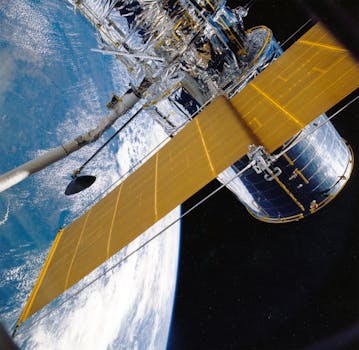GEO Satellites: Understanding the Role of Geostationary Orbit in Global Communications
GEO satellites, or Geostationary satellites, are a type of satellite that orbits the Earth at an altitude of approximately 36,000 kilometers, remaining stationary relative to a fixed point on the equator. This unique characteristic allows GEO satellites to provide continuous coverage of a specific region, making them an essential component of modern satellite communications.
The concept of geostationary orbit was first proposed by scientist Arthur C. Clarke in 1945, and the first GEO satellite, Syncom 2, was launched in 1963. Since then, the use of GEO satellites has become increasingly prevalent, with hundreds of satellites currently in orbit. These satellites play a crucial role in providing global communications, including television broadcasting, telecommunications, and navigation.
How GEO Satellites Work
GEO satellites operate by transmitting and receiving signals to and from Earth stations, which are equipped with large antennas and transceivers. The satellites receive signals from the Earth stations, amplify them, and then retransmit them back to Earth, allowing for communication between two distant points. The geostationary orbit allows the satellite to maintain a fixed position in the sky, making it possible to establish a continuous communication link.
The signals transmitted by GEO satellites are typically in the C-band, Ku-band, or Ka-band frequency ranges, which provide a high degree of reliability and resistance to interference. The satellites are also equipped with multiple transponders, which allow them to transmit and receive multiple signals simultaneously.
Applications of GEO Satellites
GEO satellites have a wide range of applications, including:
Television broadcasting: GEO satellites are used to transmit television signals to cable headends and direct-to-home (DTH) platforms, providing access to a wide range of channels and programming.
Telecommunications: GEO satellites provide connectivity for voice, data, and internet services, particularly in remote and underserved areas where terrestrial infrastructure is limited.
Navigation: GEO satellites are used in navigation systems, such as GPS, to provide location information and timing signals.
Weather forecasting: GEO satellites are used to collect data on weather patterns and provide images of cloud formations, helping to predict weather conditions.
Challenges and Limitations of GEO Satellites
Despite their importance, GEO satellites face several challenges and limitations. One of the main challenges is the high latency associated with signal transmission, which can range from 240 to 280 milliseconds. This latency can be a problem for applications that require real-time communication, such as video conferencing.
Another challenge is the limited bandwidth available on GEO satellites, which can lead to congestion and reduced signal quality. Additionally, the high cost of launching and maintaining GEO satellites can be a barrier to entry for new operators.
Future of GEO Satellites
Despite the challenges, the demand for GEO satellites is expected to continue growing, driven by the increasing need for global connectivity and the expansion of emerging technologies such as 5G and the Internet of Things (IoT). To address the limitations of traditional GEO satellites, new technologies such as high-throughput satellites (HTS) and very high-throughput satellites (VHTS) are being developed.
These new satellites offer higher bandwidth and lower latency, making them suitable for applications such as broadband internet access and video streaming. Additionally, the development of new launch technologies and the use of reusable rockets are expected to reduce the cost of launching GEO satellites, making them more accessible to a wider range of operators.
